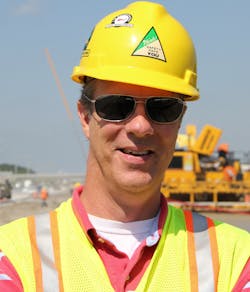I should have melted Cheetos a second time in my Big Wheel trunk and forced John Casey to suck it dry.
I mean, he was supposed to be my best friend, but maybe he thought my absence gave him the best chance at winning? Big Wheels were huge back in my first-grade days. Our plastic front wheels were stripped of any traction due to excessive use, but a spinning start did not stop us from running the streets, OK sidewalks, with our Big Wheel presence. However, I found out packing a snack in the trunk during a hot day was no picnic. After a couple of hours of cruising what was left was an orange, liquidy mess, I didn’t even get one whole Cheeto out of it.
The second Big Wheel blowout for me came on the morning of the city of Naperville’s Big Wheel Race. John Casey and I had been talking about it for weeks, and even worked in some training laps. Our chugging legs were in the best condition of their young lives . . . we were the Mario Andretti’s of the junior pedal circuit. The plan was to meet over at John’s house the morning of the big race, and his parents were going to take us downtown for the event. At least that is what my 6-year-old ears recorded. When I arrived next door the next day, John and his family were gone. I was devastated. I mean, this was my chance to start my city legacy, because everyone would long remember the Big Wheel Race champion of 1975. When John returned home, I immediately cornered him in his garage. “What happened? I thought we were going together?” I can’t remember the excuse he laid out to me, but he did say I would not have like it because there was a lot of dust and pollution. I take it he swallowed a good amount of Big Wheel fumes because he did not come close to winning. Serves the little punk right anyway.
Every time I visit a road construction site, I can’t help but remember my first-grade crisis, because dust in a work zone is a growing concern across the U.S. In fact, by now the solutions should be fully matured. Yet, every time I see the ineffectiveness of the water truck. I mean, how long does it take for water to evaporate in 95° heat in the middle of July? A few minutes?
Drivers moving through the I-77 project in Charlotte, N.C., need a lighthouse at times to guide them through what many describe as a thick fog. In fact, a recent Facebook photo showed cars going through a wall of dust and particles. The subcontractor on the project claims it is on it, applying more than 100,000 gal of water daily. Add the silica dust issue affecting the workers on-site and the seriousness becomes dense. However, in this ever-advancing world there are more effective alternatives to fight dust and debris, and most claim to be half the cost of watering trucks. Some even claim to last the entire lifetime of the project.
So why aren’t contractors using them? Why aren’t DOTs requiring them in the bid? Is this the case of “doing what has always been done,” or is there another reason for resistance? I can tell from first-hand experience that watering does not work. I don’t quite understand the neglect here, because the lawyers alone could make the builder, and/or owner, eat their lunch.



